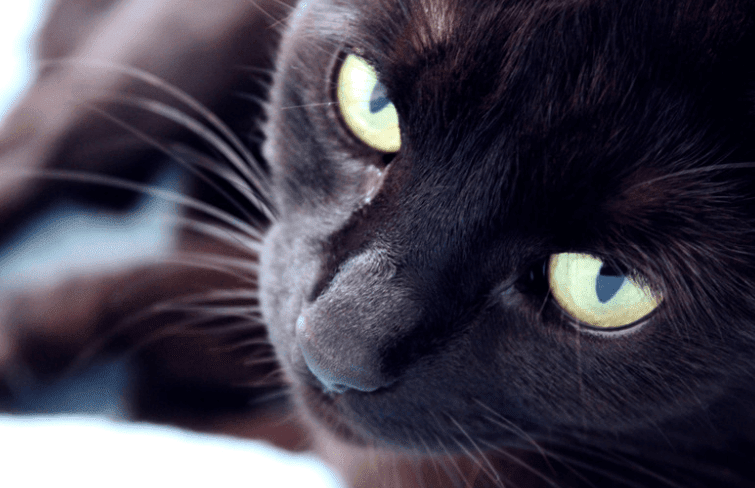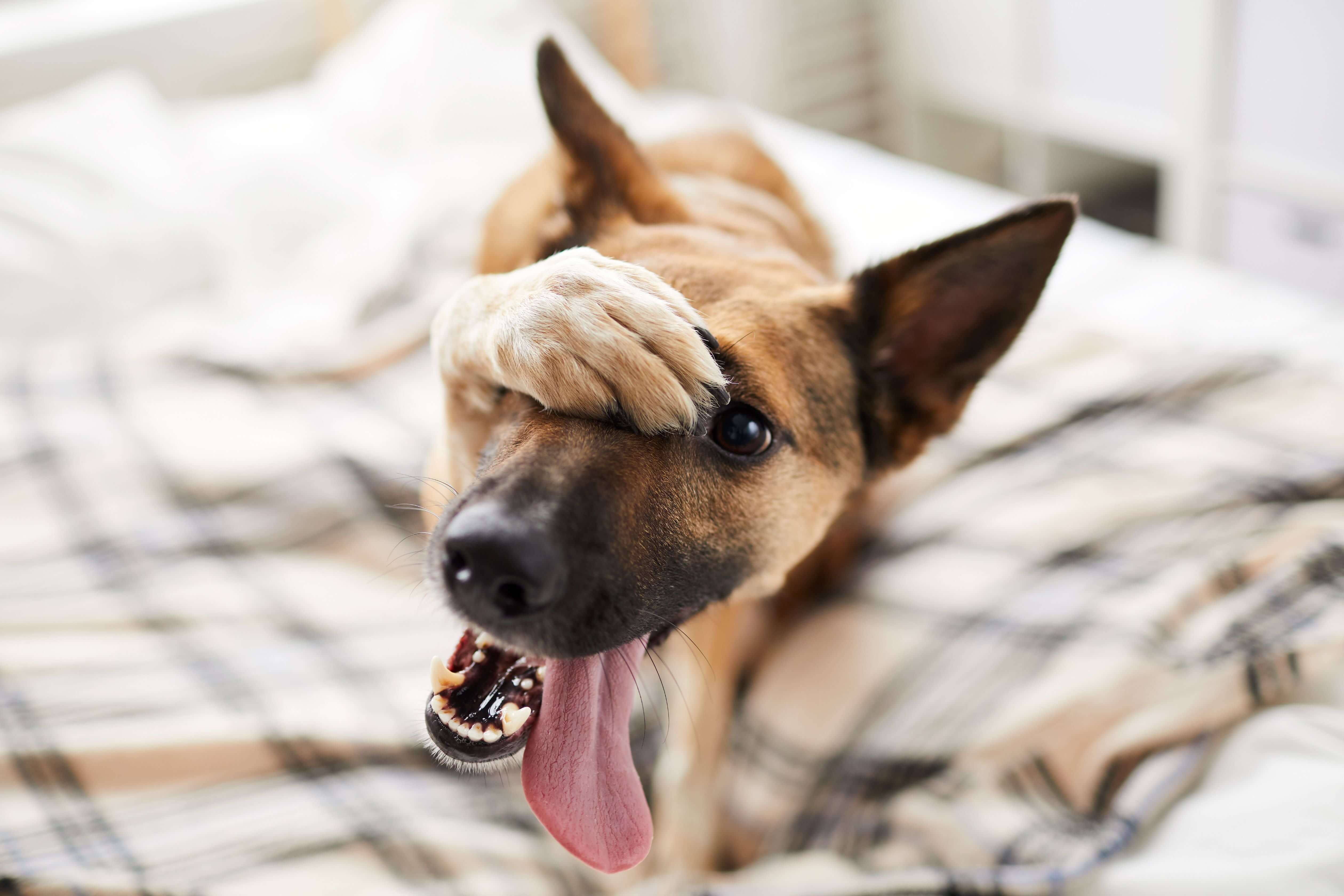Cats have amazing and unusual eyes for domesticated animals. They are uniquely designed to be perfect for their nocturnal hunting habits. Their vertical pupils are able to adjust like a camera. If you have ever seen the glow of cat eyes at night, those beautiful eyes can be almost scary as they glow in the dark! As cool as cat’s eyes are, they are also very sensitive. It is common to find wetness collecting in the corners of your cat's eyes. If wiping it away gently doesn't help, you may be dealing with one of the common eye infections in cats.
Table of Contents
1. What is Causing Your Cat’s Red, Watery Eyes?
These infections happen to most cats at least once in their life. To best care for your kitty friend, it's important to know what causes these infections, what signs to look for besides the watery eyes, and how to help your cat feel better.
2. How Serious are Eye Infections in Cats?
It's natural to feel worried when you see your cat in pain, whether you're new to cat parenting or you've been taking care of animals for a while. The good news is that most common eye infections can be treated pretty easily, with homemade remedies. If you catch it early and start treatment, your cat will bounce back quickly to their usual activities like playing and cuddling. However, it's important to be aware that some eye infections in cats might be serious. If your cat seems more tired than usual, keeps rubbing their eyes a lot, or is having trouble breathing, it might be a sign of a bigger problem. In these cases, it's important to get them to a homeopathic vet right away. If left untreated, these infections could lead to blindness or even death. So, the key is to act fast and get the right treatment. But how do you know if your cat's infection is urgent? Firstly, you need to know what signs to look for to know if it's an eye infection. Then you will know what to do to help your cat feel better.
3. What are the Signs and Symptoms of Eye Infections in Cats?
Your cat has more in common with you than you think. The first signs of a cat-eye infection are very similar to those experienced by humans. If your cat displays any of the following symptoms for more than a few days, it is likely you are dealing with eye infections in cats.
-
Red eyes – The white of your pet's eyes may turn red.

- Weepy/watery eyes – Your cat may appear as though they are crying. Their faces may even be a little damp from tears.
- Discharge at the corner of eyes and under eyelids – The discharge may be clear, yellow, green, or white.
- Excessive rubbing, blinking, or constant squinting – It will be a bother for your pet.
- Avoidance of light – They may become extremely sensitive to light and hide under a bed or blanket.
- An inflamed third eyelid – The third eyelid may swell or become visible when the cat is not blinking.
- Crusty eyes – Pus may gather and harden near the tear ducts.
4. Which Dangers Cause Eye Infections in Cats?
Not all eye infections in cats are the same. There are eye infections that will spread to other pets, and some eye infections in cats will not. Some eye infections are more likely to impact older cats while others are commonly found in younger ones. It all depends on what is triggering the eye-infection. Here are some of the most common causes along with their treatments:
Conjunctivitis (Pink-Eye)
Conjunctivitis is a common eye problem in cats. It happens when the thin layer inside the eyelids and on the outside of the eyeball gets inflamed. If your kitty has conjunctivitis (which may be infectious or non-infectious), their eyes might turn red, they might blink a lot, and you might notice some gooey stuff coming from the corners of their eyes. Sometimes, their eyelids might look puffy and swollen. For more in depth information on this condition, check out our post specifically on Conjuctivitis/Pink Eye infections in cats.
Infectious Conjunctivitis: Bacteria, fungi, and viruses such as Feline Herpesvirus (FHV), Chlamydophila Felis, and Mycoplasma are the usual causes for this type of conjunctivitis. If your kitty has this type, it is best to keep them away from your other pets and animals. If you're worried about getting "pink-eye" from your furry friend, it's possible—but not very likely. Veterinarians believe that although most eye diseases in cats are viral, they aren't easily transmitted to humans.
Non-Infectious Conjunctivitis: Sometimes it's not a virus that causes conjunctivitis. Even a tiny bit of dirt getting into their eye can make it happen. Things like mold, sprays in the air, bug sprays, or even the shampoo you use on your pet can bother their eyes too. Some plants, like lilies and daffodils, are really bad for cats if they eat them, but even just the pollen from other plants, such as oleanders, tulips, and Spanish thyme, can cause eye infections in cats like conjunctivitis. It's a good idea to keep these plants away from your home to keep your cat safe. Almost anything can bother their eyes. Cats' eyes are super sensitive!
Upper Respiratory Infections
What does breathing have to do with eye infections in cats? It's not as far-fetched as you may think.

When you and I have a cold, we'll experience the typical symptoms; sneezing, a runny nose, and discharge collecting at your eyelids. These are very similar to those experienced by your cat when they’ve got a flu. When cats get colds, it's usually because of viruses like Feline Calicivirus, Chlamydia, Bordetella, and other kinds of fungus. These germs make it hard for them to breathe. And often, they'll have gooey stuff around their eyes too.
This is especially true for older cats and young kittens. If you've adopted a sweet cat from a shelter, rescued an older feral cat, or you're nursing a newborn and you've noticed them having flu-like symptoms, they may have an upper respiratory infection. Senior cats as well as feral cats who have weakened immune systems are likely to develop recurring eye-infections as a result of respiratory illnesses. Our BestLife4Pets Immunity Boost is great for supporting all cats at all stages of life, but especially helpful for cats with chronic diseases such as Feline Leukemia Virus, Feline Immunodeficiency Virus, or Feline Herpes Virus, and elderly cats.
It is often hard to know what's causing a respiratory infection, as many things may cause it. Since eye infections often happen because of respiratory infections, the treatment should try to fix both problems.
To help your cat with their respiratory infections in the comfort of your home, be sure to:
- Make the Air More Humid: Let your kitty hang out in a steamy bathroom for 10-15 minutes each day. This can clear their stuffy nose.
- Minimize irritation caused by runny eyes and nose: Keep their eyes and nose clean by gently wiping away any gooey stuff with a damp tissue.
- Make their food irresistible: If they don't feel like eating much because their nose is stuffy, give them their favorite wet cat food to make sure they get the nutrients they need to fight off the infection
Our BestLife4Pets' Breathe Easy Cat Cold & Respiratory Infection Remedy is a natural respiratory support remedy is designed to help with cat colds, upper respiratory tract infections, FVR, FCV, asthma, and persistent congestion. It provides effective relief for sneezing, wheezing, coughing, fever, and runny noses, so your cat may breathe easier.
As always, if your cat may be dehydrated, seems depressed, or is very sick or lethargic, see a trusted veterinarian right away as they may need emergency treatment.
Uveitis
Uveitis is a painful eye infection that can lead to complete blindness if not treated properly.

This condition occurs when the uveal tract (consisting of the iris, ciliary body, and choroid) becomes inflamed or damaged. You'll know that your pet has Uveitis when their eyes are red and cloudy; or they're squinting and are avoiding light. In some cases, the cat may paw away at the sore eye.
Causes of Uveitis may range widely from trauma, feline leukemia, immune system disorders, other tumors, bacteria like Bartonella, mycobacterium, and even internal parasites. Uveitis must be treated, it will not go away on it’s own, especially when it happens because of a serious disease.
Making your cat’s immune system stronger with our Natural Cat Allergy & Immunity Support Supplement is an important step to take in helping your cat to thrive even with chronic diseases such as Feline Leukemia Virus, Feline Immunodeficiency Virus, or Feline Herpes Virus.
Allergies
Just like humans, cats often have environmental and seasonal allergies that cause similar symptoms to a cold, such as sneezing, runny nose, snoring, heavy breathing, watery runny eyes, scratching the eyes, and coughing or wheezing. Our post on Common Cat Allergies take a deep dive into this issue. Our recent rebrand includes the new and improved Cat Allergy Relief & Immune Support to help your kitty win the battle against seasonal allergies that may cause eye infections in cats.
Corneal Ulcers
A cat’s cornea is very sensitive and an untreated scratch on the surface of a cat's eye can result in a corneal ulcer. When this occurs, you'll notice discharge, reddening of the eyes due to inflammation, a cloudy cornea along with the other general signs associated with vision problems. Causes of corneal ulcers can be as 'minor' as ingrown eyelashes or dirt under the eyelid to more serious conditions such as:
- Bacterial and viral infections
- Exposure to harmful chemicals
- Blunt trauma during fight or play
- Dry eyes
Speed in diagnosis is essential to ensure your pet doesn't lose their sight when they've received corneal ulceration. The earlier the situation is detected and taken care of, the better!
5. How are Eye Infections in Cats Treated Naturally?
Most common eye infections may be treated pretty easily with homemade remedies. These recipes will be a great help when you begin noticing those first signs of eye infections in cats.
What You Will Need for Cleaning the Eyes:
¼ teaspoon of salt
1 cup of lukewarm water
Cotton balls
Directions: Mix salt with lukewarm water Soak the cotton ball in the solution for a few seconds Squeeze a few drops from the cotton ball into your cat's eyes to rinse them. Clean the edges of the eyelids and remove any crusty build-up present.
For Soothing the Eyes: Compresses of warm water can also be placed on your cat's eyes a few minutes at a time, a few times a day to improve your cat's comfort. What You'll Need:
A Bowl
Water
A Hand Towel
Directions: Fill the bowl with water that feels lukewarm to the touch.

Soak the towel in the water, wringing out the excess. Fold the towel into a square and apply it to your cat's eye. Your cat probably won't like the process so expect a little fight; they'll thank you after for sure.
TRY OUR HOMEOPATHIC THERAPY for eye infections in cats! Our Cat Eye Infection Remedy is so gentle on your feline's body yet will powerfully fortify their immune systems to fight eye-infections caused by an upper respiratory infection, conjunctivitis, inflammation of the cornea, Epiphora, bacterial/viral infections, nerve damage, and even allergies. Our remedy doesn’t just suppress the associated symptoms of eye infections in cats; it goes a step further and fortifies your cat’s immune system to fight the infection itself.
BestLife4Pets Eye Care and Vision Support Relief remedy is a unique and proprietary formulation of well established homeopathic remedies that provides effective relief of eye infections or feline calcivirus including symptoms such as red and swollen eyes; conjunctivitis (inflammation of the eyelids); ocular and nasal discharge; soreness, burning, itching or pain in the eyes; as well as clearing of blurry or cloudy vision. It may also help with paralysis of the optic nerve which can lead to eye spasms, sagging or droopy eyes. Help improve your kitty's sight and eye health with our effective and all-natural remedy proven to heal and support their vision for the long term.
Using a powerful blend of plants and minerals, you can release your pet from the discomfort and pain and restore their eye health and overall wellbeing.
Give it a try and share with us your pet's healing story - your feedback truly helps us to help more pets.
Eye infections in cats can happen to any happy kitty. The good news is that it won't last forever. With the correct diagnosis and the right natural solution your kitty may start to feel better fast!
Again, if your cat may be dehydrated, seems depressed, or is very sick or lethargic, see a trusted veterinarian right away as they may need emergency treatment.
We wish your sweet kitty good health!



